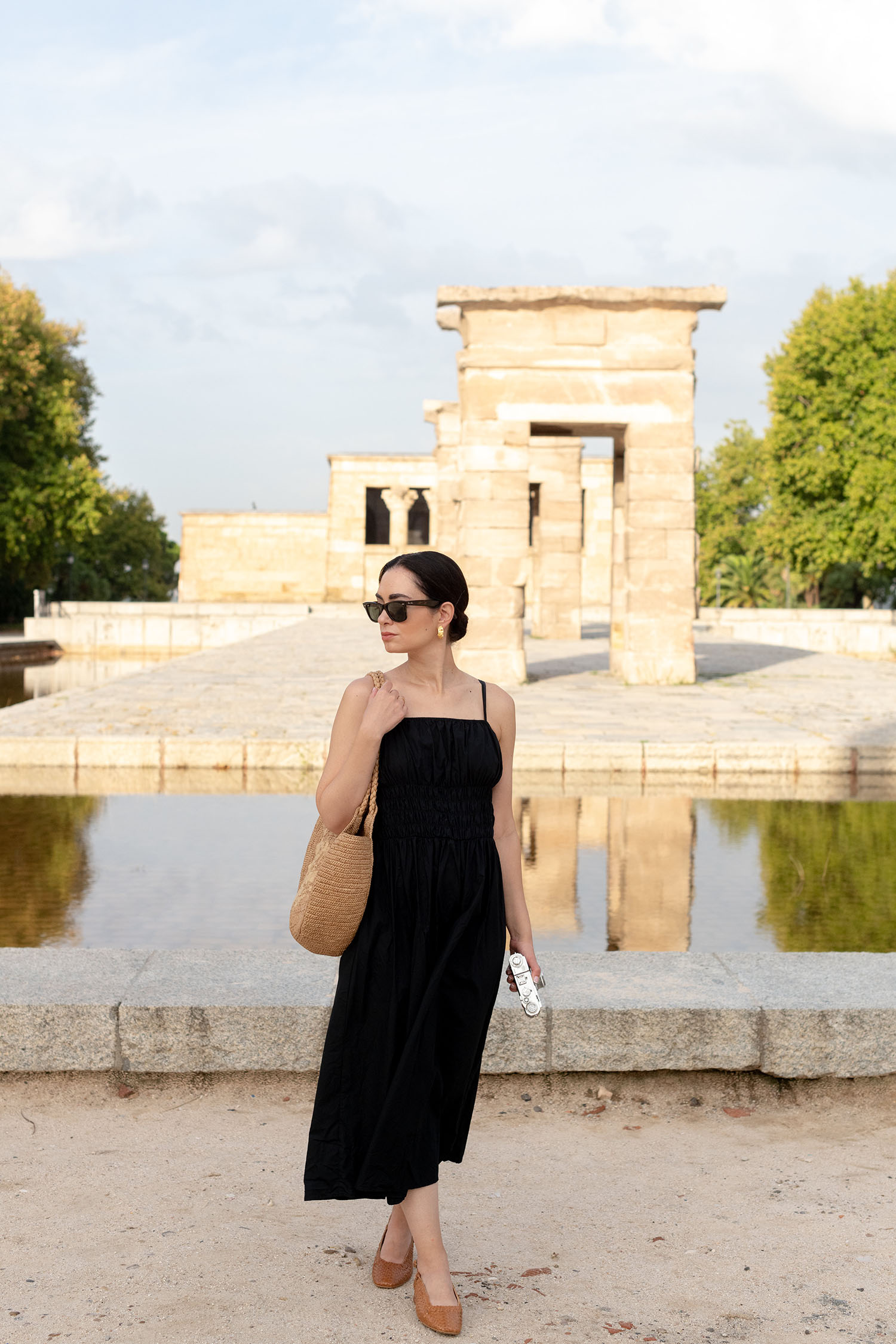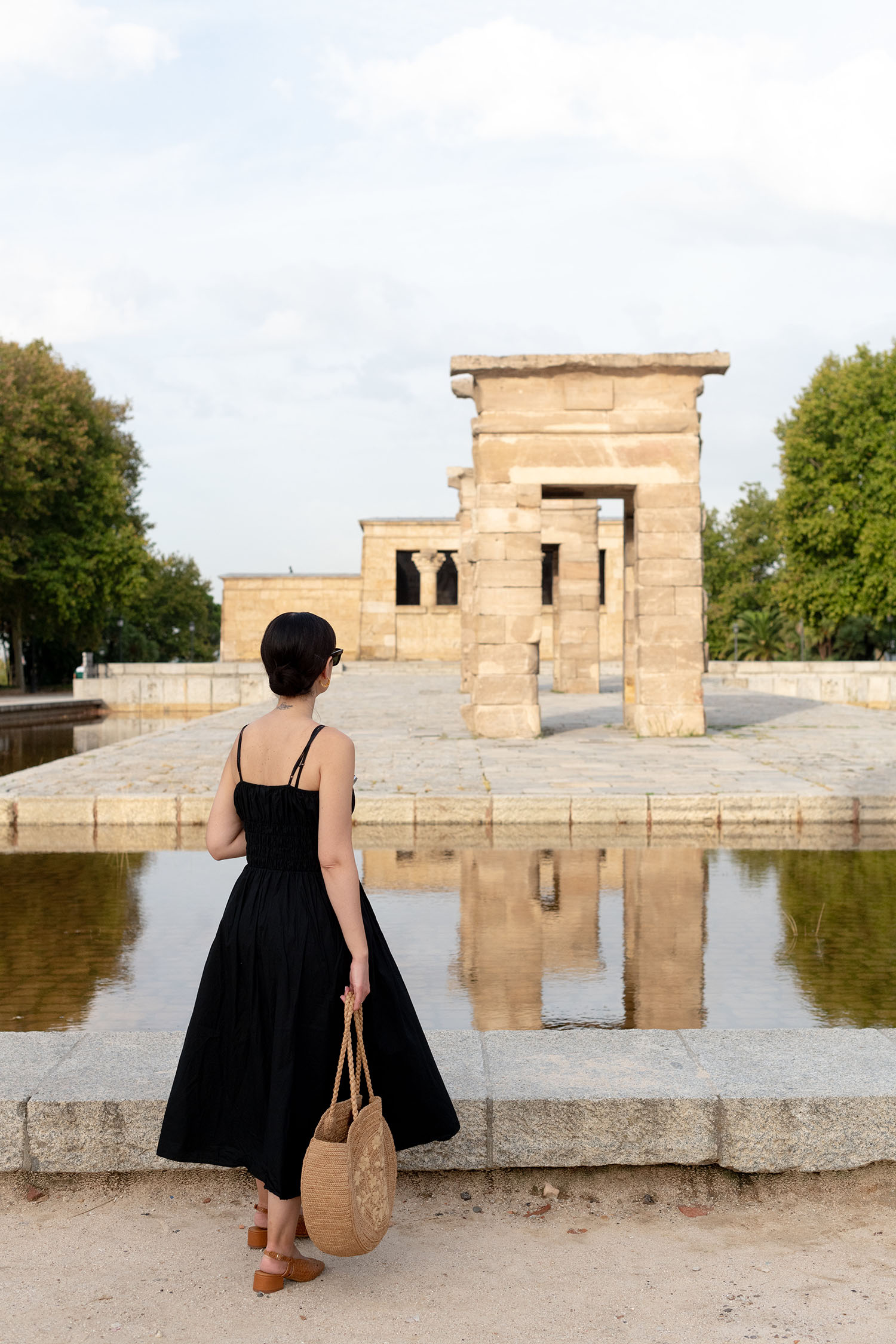

Sezane heels
Sezane bag
RayBan sunglasses
Linjer rings
Pamela Card Jewelry earrings
Location: Temple of Debod – Madrid, Spain
It seemed a bit improbable, sitting in a cafe eating churros con cafe, that we were on our way to visit an Egyptian temple. We were in Madrid, after all, which is forty-five hundred kilometres from the Egyptian capital. But politics makes strange bedfellows. Spain helped to save the temples at Abu Simbel. Years later, when construction of a dam at Aswan threatened the Temple of Debod, UNESCO intervened. Ultimately, the Egyptian government decided to donate it to Spain as a symbol of gratitude.
The donation happened in 1968. The Temple of Debod, originally erected in Nubia in the second century BC, opened to the public in the Parque del Oeste in 1972. Thus, after enjoying a traditional Spanish breakfast, we took a trip as close to ancient Egypt as I suspect we’ll ever get – by walking fifteen minutes through Madrid, passing the royal palace and ancient Roman ruins along the way. To describe the experience as surreal would be to grossly understate its reality.
And yet, in fact, there was nothing surreal about it – because we humans have far more commonalities that differences, even when we come from disparate cultures and speak unrelated languages. Our shared history illustrates that, and the Temple of Debod is just one of countless examples. Originally commissioned by the Kushite king of Meroe, Adikhalamani, it was extended three times, on four sides during the Ptolemaic dynasty, by different Ptolemaic kings. Later, the Roman emperors Augustus and Tiberius completed its decoration. Amun was first worshipped in the temple, and then Isis. The Romans may have worshipped other gods and goddesses, or simply liked the way the temple looked. Either way, generation after generation agreed this was an important place and continued to use it, simply changing the names of the gods as they went along.
That tradition continued in the last century, with UNESCO, Egypt and Spain. We don’t all see exactly the same thing when we look at the Temple of Debod, but we can all agree, regardless of our background and personal experience, that it’s special; worthy of both conservation and admiration. And so it wasn’t really improbable at all, although it felt it, to visit an Egyptian temple in the Spanish capital. And either way, it was absolutely worth it. Seeing the Temple of Debod was quite possibly my favourite thing we did in Madrid, and certainly the one I remember most vividly months later.
From churros con cafe to ancient limestone columns. What a morning.